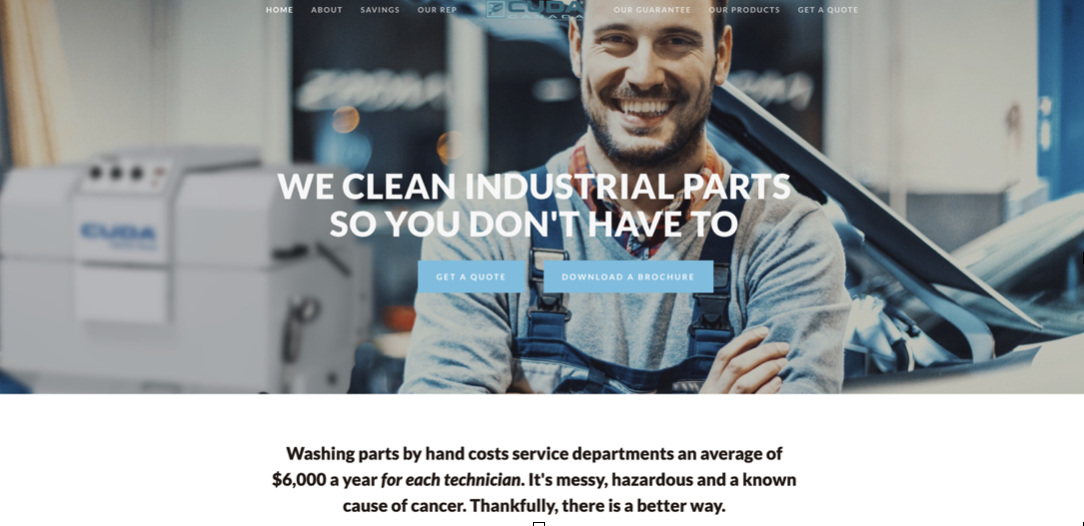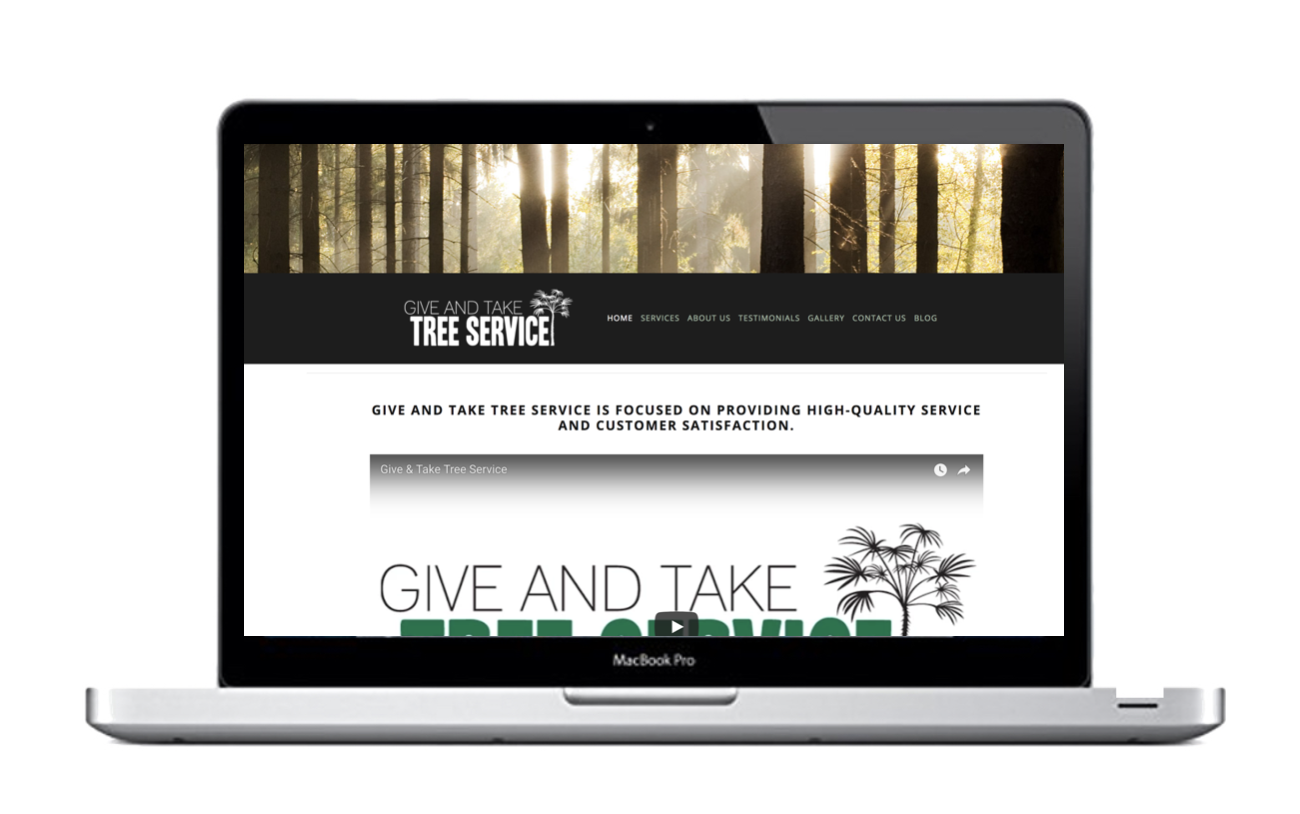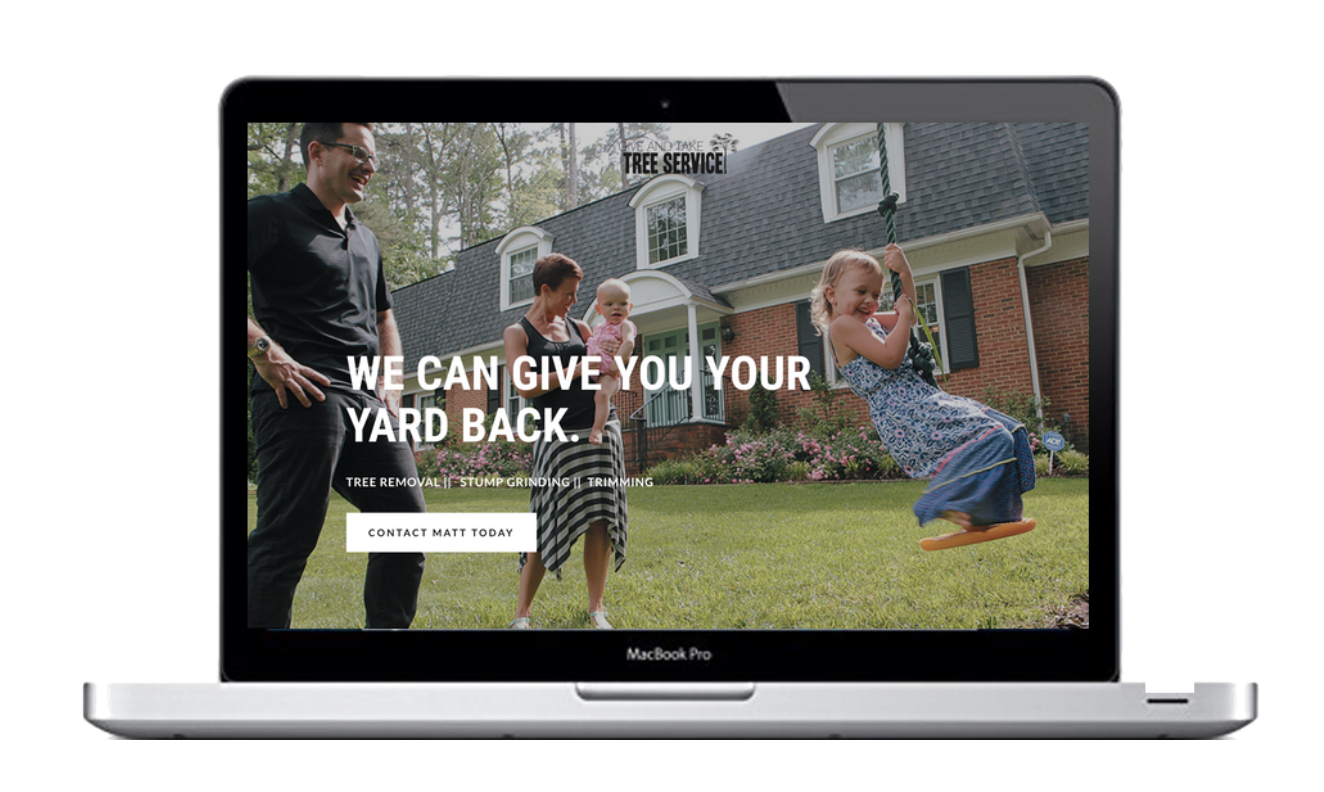
If a customer uses your product or service, what kind of experience will they have?
Working with you has solved a problem for them. How are they feeling about that? Will they be happy? Where will they be located at the time? Who will they be with in that moment?
These are the kind of questions I ask when I go through a consultation with clients.
I describe this as your customer’s “Happily ever after…”, the part of the story where everything gets wrapped up like we had been hoping for the whole time.
You, the guide, want to show that you can give it to them. But first you have to show them that you know what they are looking for.
One of the easiest ways to do this is to place an image of the customer experiencing their happily ever after within your header image.

The Big Shift
One of the key shifts that StoryBrand clients learn is that customers buy products to solve internal problems. An internal problem is what you feel when you are struggling with a problem externally. For example, let’s say after dinner one night my lovely wife, Hayley, is cleaning up and then tells me, “Jon, the sink is plugged. Can you help me?”
A clogged sink is an external problem. Our sink will not allow actual water to pass through anymore. I, however, am facing a more complex crisis in my thoughts:
Oh no, not again. I’m going to be found out. My dad never taught me how to unclog a sink. Am I even a man? Can I not help this poor damsel in distress? Are we going to have to call a plumber to come out? Or even more, will we have to call a neighbour to come and be the hero who saves us?… This is so emasculating.
A clogged sink is not just a clogged sink - it can be a crisis of identity. Every problem is both external and internal.
StoryBrand clients learn that internal problems are powerful motivators. A company will be successful if they can come along and promise solutions to these internal struggles we deal with all the time.
Imagine if, upon announcement of the sink being clogged, I went online and found a website where the first picture I saw was a man with his wife looking proudly at him and his kids sitting at his feet in adoration. Whatever this dad has done, he has won the day. He has the respect of his wife and the admiration of his children. What dad wouldn’t want that experience? Here’s the catch: Over his shoulder, he is holding a plunger and the dad is winking at the camera. I should add that there is a headline that reads: “With our plungers, you get to be the hero.”
That, to me, is how you sell plungers. You throw up a picture of an internal problem solved and let the viewers fill in the rest of the story. If they work with you, their internal problem can be solved and they too could experience the promised “happily ever after” they see in the picture.
Your ideal customer wants to see themselves in your website header image.
Helping You Get Creative
There are many possibilities for what you can include on your image. The best header images take some time thinking about what your client wants. What kind of experience will be having when they achieve it?
Imagine the ideal situation and then brainstorm ways to show that this outcome is possible when they work with you. Here are some questions you can ask to help you find the right image for your website:
- What does your ideal client want to achieve in his or her life?
- What will they do when they achieve it?
- Who will they be with?
- What will be the look on their face at the time?
After you ask those questions, you should have a pretty clear idea about what your image should be. This is not a tough change to make to your website but psychologically it makes a big difference.
Case Study: Matt The Arborist
One of my earliest clients was a friend named Matt. Before we first started working together, I asked him, like I do with all prospective clients, do you want this company to grow? (We will only work with those who say “yes”).
Matt’s website was ok. I knew his company would grow even more if he made some changes, starting with his header picture. It was a picture of a forest.
 What was the process of choosing this image?
What was the process of choosing this image?
I can’t say for sure but I imagine a web developer was in need of a picture after coding the structure of the site. Knowing Matt worked with trees, he found a picture of a whole bunch of trees and decided this would make a fitting main image.
I told Matt that this picture of trees was misleading. Unless he was selling forest land, it was not advertising his company. Even worse, the forest picture was costing him money. As a result of this picture, he had to work longer hours away from his family. Matt didn’t want that to happen any longer - so we changed the image.
We sat down to go over Matt’s marketing strategy, determining that his ideal client was a homeowner who wanted to take back the beauty of their yard. They wanted the yard back but didn’t want to do the work.
I taught him about how his target client wanted to see themselves in your main image in an ideal situation. I found a picture of a family swinging in the backyard, loving their time together. The dad looks proud and the mom is not worried about dead trees falling on her kids or house anymore. As a father, I would hope I too could enjoy my kids playing in the yard without the threat of falling timber.
The most important moral of this story is that his company's new website started to perform better immediately.

One day after we went live, Matt got four calls asking for his service. With great joy and excitement, Matt called me saying that each one had commented on his website - it was the difference maker that made him stand out over his competitors.
Matt called me again the next day saying that through the contact form we added, he got another three leads. Matt was beyond pleased to have a website that not only looked good but was made with attention to the details that would generate more business. He loved showing it off to friends wherever he went.
How About You?
Before you think of your website, take a moment to ask the bigger question: Have you identified your ideal client that you will target your marketing towards?
Ask yourself this question, “If someone used our product or service, what would be the result? Where would they be? What would they be doing? What would their faces look like?”
Now take a moment to look over your existing website. Does the picture match the scenario you were just imagining for your client?
If not, it’s time to swap it out.
Thankfully there are many photography websites that offer high resolution photos that you can use to capture the experience your company or organization delivers. Make sure you invest the few dollars that a high quality image demands because you do not want lawyers coming after you later demanding you pay up for stealing their client’s work.
Your image is the first thing people will see when they go to your site. This is not the place to be cheap or for thievery of copyrighted material.
This is the place to show visitors that you understand them and want to help them become who they’ve always wanted to be.
That’s what a good website image can do.




